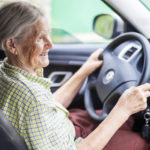 As autonomous vehicles slowly creep towards the market, many have speculated that the first area they will be deployed is in retirement villages. Not only is there a clear need for solutions to help the elderly population stay mobile, but cognitive issues make driving themselves increasingly challenging. Throw in the relatively controlled environment in the typical retirement village and they tick many of the boxes for initial deployment.
As autonomous vehicles slowly creep towards the market, many have speculated that the first area they will be deployed is in retirement villages. Not only is there a clear need for solutions to help the elderly population stay mobile, but cognitive issues make driving themselves increasingly challenging. Throw in the relatively controlled environment in the typical retirement village and they tick many of the boxes for initial deployment.
A recent paper from Newcastle University suggests things may not be quite so straightforward. Whilst progress in the technology has been considerable, level five, or full automation, is still some way off. Level three technology still offers considerable automation, but requires the driver to step back in when required, thus they cannot be fully disengaged from the process as they may need to regain control at short notice.
“For younger people that switch between tasks is quite easy but as we age, it becomes increasingly more difficult and this is further complicated if the conditions on the road are poor,” the researchers explain.
Time to respond
The researchers utilized the DriveLAB simulator at the university to put 76 volunteers from two different age groups (consisting of 20-35 year olds and 60-81 year olds respectively) through their paces. The two groups were placed in a simulated driverless car scenario for a short period, during which they were instructed to take back control of the vehicle to avoid an accident. Each volunteer was asked to disengage from driving completely, with the time taken to respond measured at three stages: when the driver returned to the correct position, when they started remedial action, and then when the action was completed.
“In clear conditions, the quality of driving was good but the reaction time of our older volunteers was significantly slower than the younger drivers,” the authors explain. “Even taking into account the fact that the older volunteers in this study were a really active group, it took about 8.3 seconds for them to negotiate the obstacle compared to around 7 seconds for the younger age group. At 60mph that means our older drivers would have needed an extra 35m warning distance—that’s equivalent to the length of 10 cars.”
The performance of the elderly cohort was also diminished in terms of their ability to takeover the vehicle again, whether regaining control of the steering wheel, the accelerator or the brake. This significantly increases the change of elderly drivers having an accident in an autonomous vehicle.
Poor conditions
Interestingly, in poor weather conditions, the younger participants seemed to slow down and were more in line with their older peers, but driving quality nonetheless dropped across the board. This decline saw older drivers involved in 20 accidents versus 12 for the younger drivers.
In addition to testing the ability of drivers to regain control of their vehicle, the researchers also examined the perceptions of autonomous technology among older drivers after they had used the simulator. There was a generally positive consensus towards the technology, but many said they still wished to retain control over the vehicle. They also expressed a desire to receive regular updates from the vehicle, much like SatNav systems do today, with these helping them to maintain awareness of the road conditions, even if they’re engaged in another activity.
The team next plan to explore some of the improvements that could be made to autonomous vehicles so that the problems identified during the research could be mitigated.
“The research here on older people and the use of automated vehicles is only one of many questions we need to address regarding older people and mobility,” the authors say.